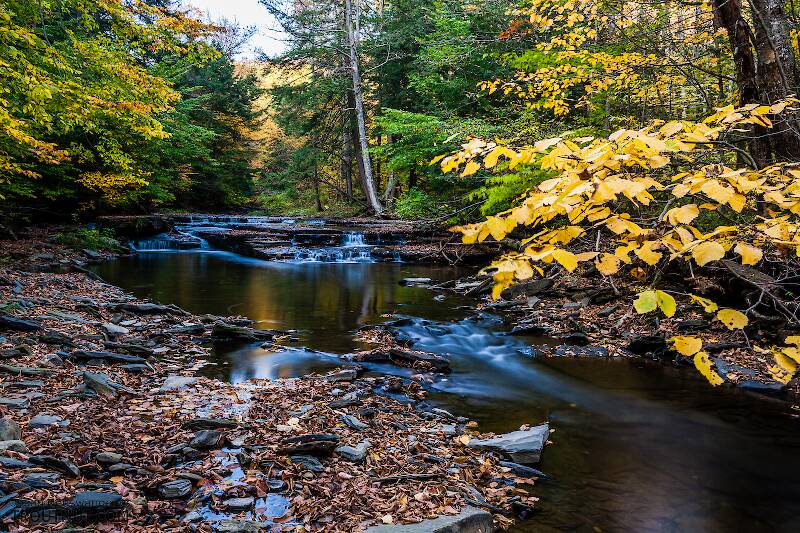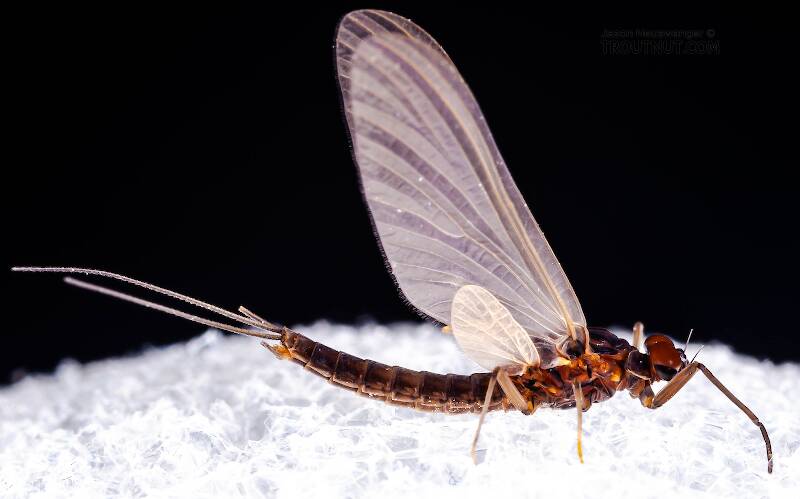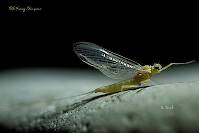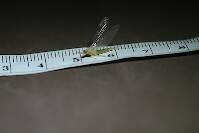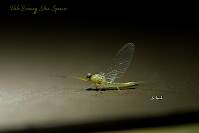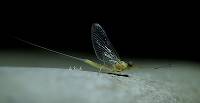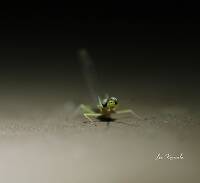
Blue-winged Olives
Baetis
Tiny Baetis mayflies are perhaps the most commonly encountered and imitated by anglers on all American trout streams due to their great abundance, widespread distribution, and trout-friendly emergence habits.
Featured on the forum

This is the first of it's family I've seen, collected from a tiny, fishless stream in the Cascades. The three species of this genus all live in the Northwest and are predators that primarily eat stonefly nymphs Merritt R.W., Cummins, K.W., and Berg, M.B. (2019).

Troutnut is a project started in 2003 by salmonid ecologist Jason "Troutnut" Neuswanger to help anglers and
fly tyers unabashedly embrace the entomological side of the sport. Learn more about Troutnut or
support the project for an enhanced experience here.
Martinlf on May 4, 2007May 4th, 2007, 6:38 am EDT
Jason, as noted before the photos of the ventral side, from the fish's eye view are great. These Show the lighter edges of the segments that Gonzo often imitates with lighter thread. I've been tying some of my baetids and paraleps with a unithread body ribbed with a lighter color (twisted to make the rib thin) and the trout seem to like it. I sometimes, (when I remember) add a coat of thinned flexament, which preserves the true thread color when it gets wet. I'd be curious to hear others ideas about Blue Quill imitations. A parachute has been working as well as Gonzo's upside down comparadun tie, one of which was readily gobbled (and seated in the lip on the hookset) by a nice spring creek brown as I hit the tail end of the hatch after a day of nymphing yesterday.
"He spread them a yard and a half. 'And every one that got away is this big.'"
--Fred Chappell
--Fred Chappell
JWW on May 13, 2007May 13th, 2007, 3:45 am EDT
Can I ask how do you thin the flexament?
GONZO on May 13, 2007May 13th, 2007, 3:53 am EDT
JWW--Dave's Flexament has a companion bottle of thinner (looks the same, but has "Thinner" on the label). The ability to thin this flexible cement to various consistencies makes it very versatile.
Flytyer0423 on Aug 2, 2009August 2nd, 2009, 5:13 pm EDT
what i use for this fly is a realistic mayfly its really easy to tie i use a rusty spinner orvis spectrablend dry fly dubbing and a hi-vis post http://www.youtube.com/watch?v=Qg8Up5ph8Fo
i use this technique for all my mayfly patterns its really easy and high floating fly its even usefull for still water fly fishing
i use this technique for all my mayfly patterns its really easy and high floating fly its even usefull for still water fly fishing
(vistit my website @) www.natureboyoutdoors.weebly.com
Martinlf on Aug 3, 2009August 3rd, 2009, 10:25 am EDT
Impressive technique and fly. Thanks for sharing this.
"He spread them a yard and a half. 'And every one that got away is this big.'"
--Fred Chappell
--Fred Chappell
Flytyer0423 on Aug 20, 2009August 20th, 2009, 8:16 pm EDT
and also if you dont have a nor-vise to tie this fly you can use a bodkin and spin it in your hand its a little bit more time consuming but it is worth since you can even catch the fish with this fly on still water
(vistit my website @) www.natureboyoutdoors.weebly.com
Quick Reply
Related Discussions
Topic
Replies
Last Reply
8
Feb 12, 2009
by Troutnut
by Troutnut
5
Sep 10, 2020
by Leskorcala
by Leskorcala

